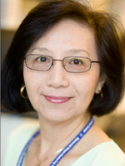Activation of peripheral-blood granulocytes is strongly correlated with patient outcome after immunotherapy with anti-GD2 monoclonal antibody and granulocyte-macrophage colony-stimulating factor Journal Article
| Authors: | Cheung, I. Y.; Hsu, K.; Cheung, N. K. V. |
| Article Title: | Activation of peripheral-blood granulocytes is strongly correlated with patient outcome after immunotherapy with anti-GD2 monoclonal antibody and granulocyte-macrophage colony-stimulating factor |
| Abstract: | Purpose: Adjuvant therapy using anti-GD2 monoclonal antibody and granulocyte-macrophage colonystimulating factor (GM-CSF) has shown treatment success for patients with high-risk neuroblastoma (NB). Although there is ample evidence on how the antibody targets NB, in vivo contribution by GM-CSF remains unclear. This report investigates granulocyte activation and its correlation with treatment outcome. Patients and Methods: Patients enrolled onto NCT00072358 received multiple treatment cycles, each consisting of anti-GD2 antibody 3F8 plus subcutaneous (SC) GM-CSF. Peripheral-blood (PB) samples from 151 patients were collected on day 0 and day 4 of cycle 1. PB from a subgroup of 35 patients had intravenous (IV) instead of SC GM-CSF during cycle 4. Samples were analyzed by flow cytometry for CD11a, CD63, CD87, and CD11b and its activation epitope CBRM1/5. Results: Comparing cycle 1 day 4 PB samples with day 0 PB samples, five of five activation marker-positive granulocytes were significantly higher. The change in frequency and mean fluorescence intensity of CBRM1/5-positive granulocytes correlated with progression-free survival (PFS; P=.024 and P=.008, respectively). A multivariable analysis identified increasing CBRM1/5-positive granulocytes and missing killer immunoglobulin-like receptor ligand as positive independent prognostic factors for PFS, whereas second-line cyclophosphamide- based therapy before protocol entry negatively influenced outcome. Thirty-five patients who received SC GM-CSF at cycle 1 and IV GM-CSF at cycle 4 had significantly less CBRM1/5 activation after IV GM-CSF. In contrast, 63 patients who received SC GM-CSF at both cycles had comparable CBRM1/5 activation. Conclusion: GM-CSF-induced granulocyte activation in vivo is associated with improved patient outcome. This activation was more apparent when GM-CSF was given by the SC route instead of IV route. © 2011 by American Society of Clinical Oncology. |
| Keywords: | adult; child; preschool child; school child; treatment outcome; unclassified drug; major clinical study; clinical trial; flow cytometry; antigen expression; multiple cycle treatment; cyclophosphamide; cell population; monoclonal antibody; drug mechanism; neuroblastoma; blood sampling; cd11b antigen; epitope; killer cell immunoglobulin like receptor; isotretinoin; cell activation; leukocyte; recombinant granulocyte macrophage colony stimulating factor; granulocyte; monoclonal antibody 3f8; urokinase receptor; lymphocyte function associated antigen 1; cbrm1 epitope; cd63 antigen |
| Journal Title: | Journal of Clinical Oncology |
| Volume: | 30 |
| Issue: | 4 |
| ISSN: | 0732-183X |
| Publisher: | American Society of Clinical Oncology |
| Date Published: | 2012-02-01 |
| Start Page: | 426 |
| End Page: | 432 |
| Language: | English |
| DOI: | 10.1200/jco.2011.37.6236 |
| PROVIDER: | scopus |
| PMCID: | PMC3269968 |
| PUBMED: | 22203761 |
| DOI/URL: | |
| Notes: | --- - "Export Date: 1 March 2012" - "CODEN: JCOND" - "Source: Scopus" |
Altmetric
Citation Impact
BMJ Impact Analytics
Related MSK Work






